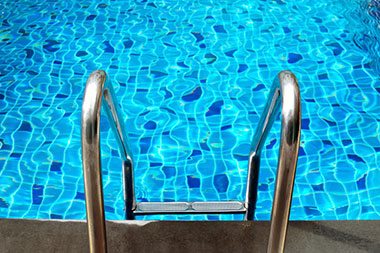Biological Markers: Not Just for Drug Testing!
You may have seen a story that’s been circulating for the past few months that questions the cleanliness of swimming pools, and makes you think twice about swimming in a public pool. But aside from the conclusions the story made that swimming pools are dirtier than we would prefer to think they are, we found the methodology that the scientists used just as interesting because it very similar to the methodology used in drug testing.
Enter Biological Markers
Here’s the gist of the story. A product called acesulfame potassium (ACE) is widely used as an artificial sweetener in foods and beverages. ACE is not metabolized by the body, but is almost entirely excreted in urine, one of many biological markers. Because this artificial sweetener does not naturally occur in our water supply, scientists have tested ground water for the presence of ACE as a way to estimate how much human waste – in this case, urine – is in the ground water. The assumption is that the only way that this artificial sweetener can appear in ground water is from the urine in waste water systems that leaks into ground water.
The scientists then thought to test swimming pools for the presence of ACE. You may – or may not be – surprised to learn that they found it in high concentrations. And they found it in much higher concentrations – as much as 570% higher – than the water supply that was used to fill the pools. Scientists were pretty certain that people were not pouring their soft drinks into the pools, which means that the artificial sweetener they found in the swimming pools was from urine.
Measuring Biological Markers
Knowing the concentration of ACE in a swimming pool, the researchers then wondered how that related to the amount of urine in the pool. To find the answer the scientists collected the urine from 20 people and measured the amount of ACE in the urine. Using that information, they determined that one swimming pool filled with 110,000 gallons of water had about eight gallons of urine, and another 220,000 gallon pool had about 20 gallons of urine.
Being in the drug testing industry, what caught our eye about this story is that laboratories also look for the presence of biological markers, or biomarkers, in urine to indicate the presence of drugs of abuse. The biomarkers for drugs of abuse may be as straightforward as the presence of the original drug, such as an opiate, or the presence of a metabolite of the drug, such as the cocaine metabolite benzoylecgonine. The presence of the biomarker in urine indicates drug use, just as the presence of ACE-P in a swimming pool at a high concentration indicates the presence of urine in the pool.
In drug testing we are familiar with the concept of cut-off level, which defines the concentration at which we are confident that the drug is present in the urine. So what is the cut-off level for ACE that shows that urine is present in your swimming pool? That is a question that the scientists did not answer in this article. The only clues the article gave were that the concentration of ACE in the pools was anywhere from four to 570 times higher after the pool was filled and used by swimmers. So it’s probably safe to say that a concentration of ACE that is at least four times the concentration of ACE in water indicates the presence of urine in a pool.
And back to our opening paragraph that described the original research on using the presence of ACE in ground water and or drinking water to assess the impact of leaking sewage systems. ACE is a very durable chemical that does not easily break down, so once it is present in a water supply it tends to remain there. It’s a reminder that our water supply is readily contaminated, and that whatever we put into the waste water system may show up in our drinking water. That includes prescription medications that are flushed down the toilet – which, by the way, can also be used as a marker of water contamination.

